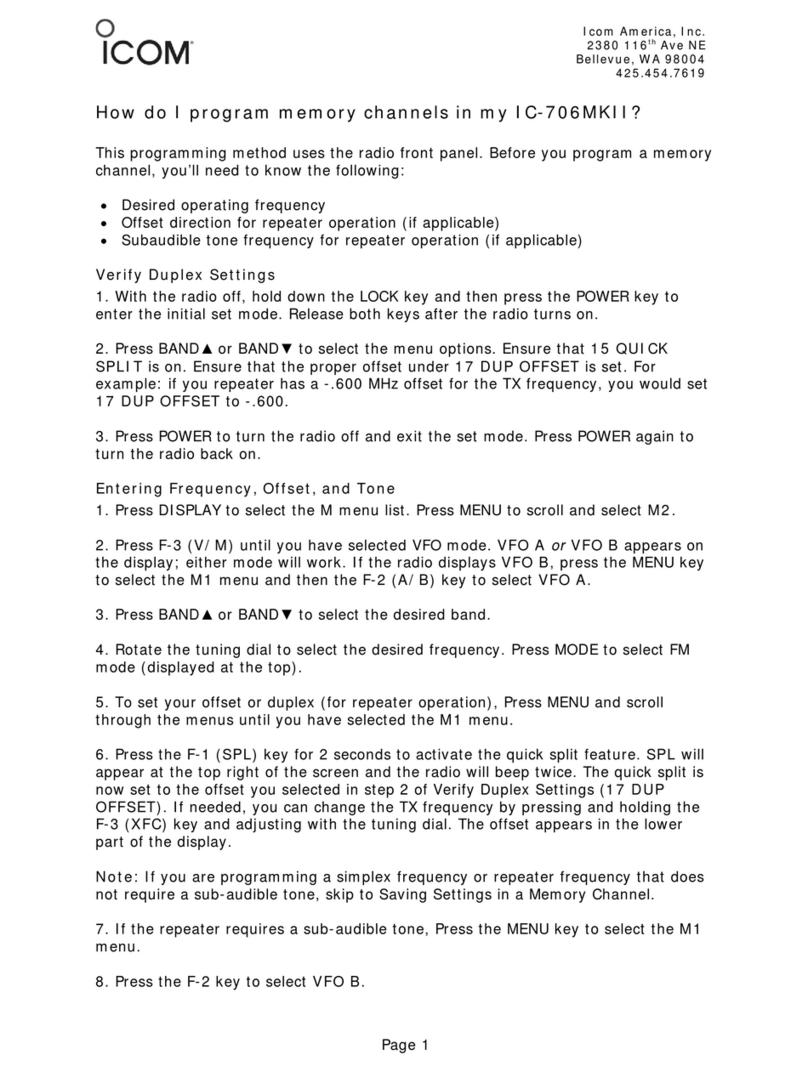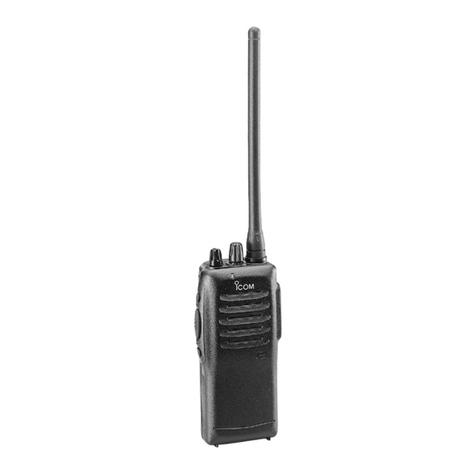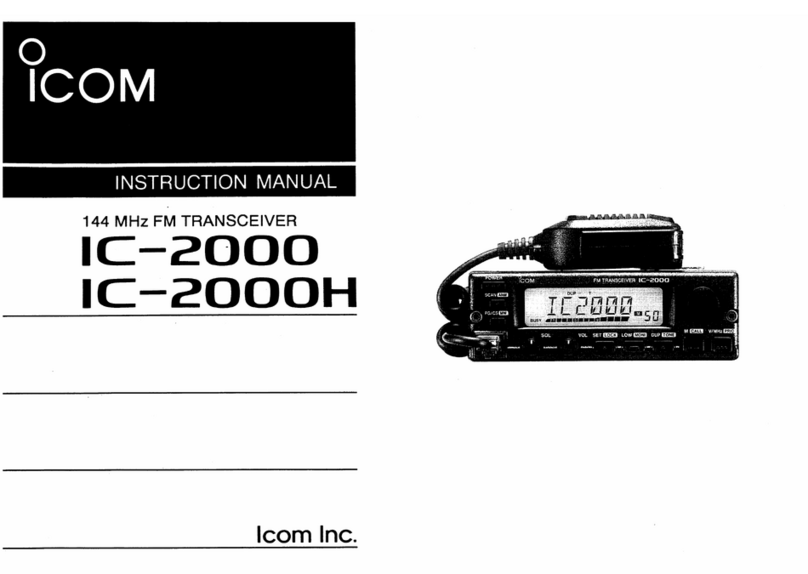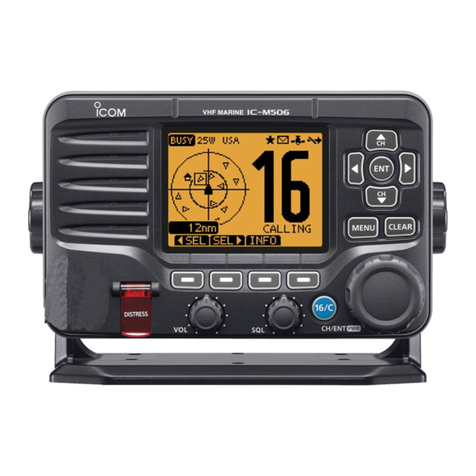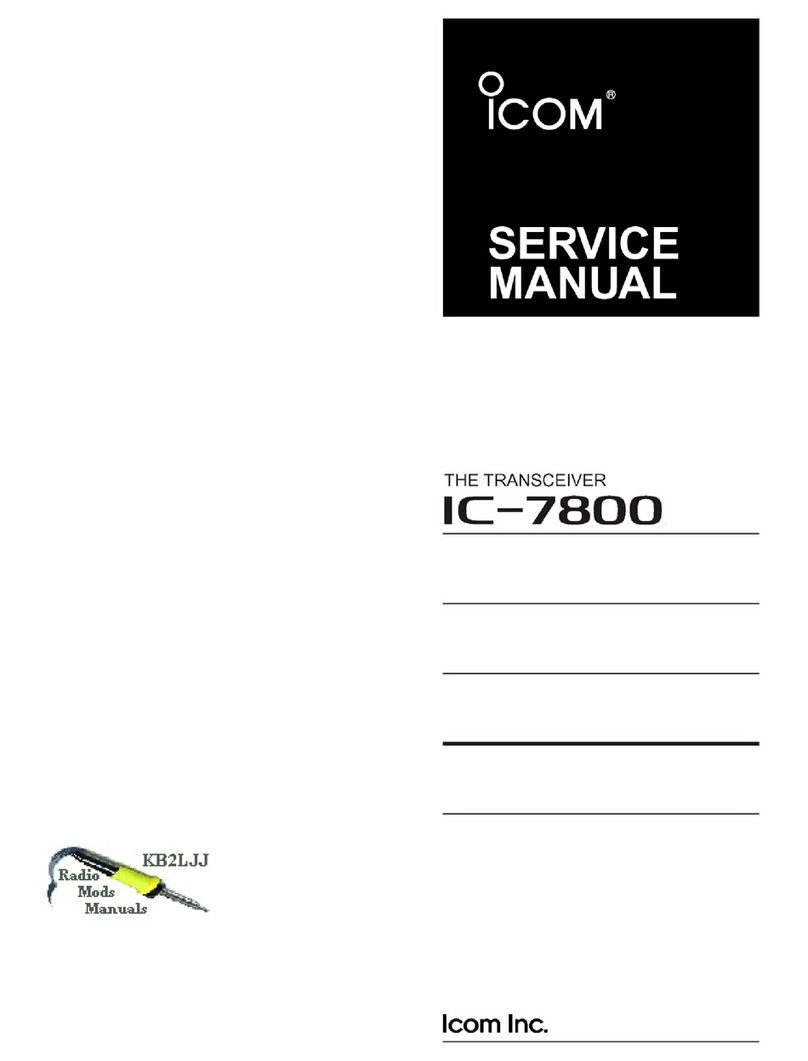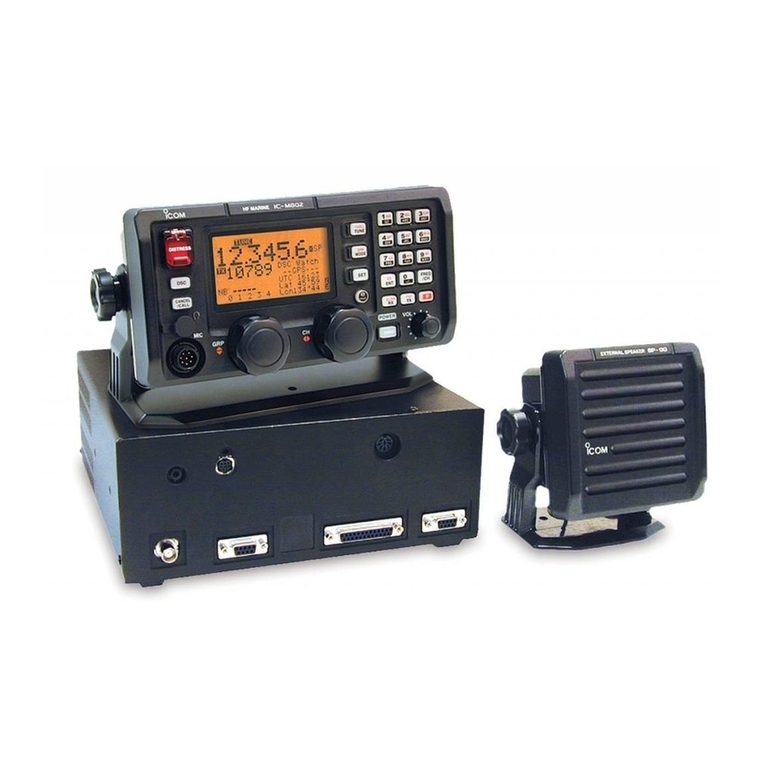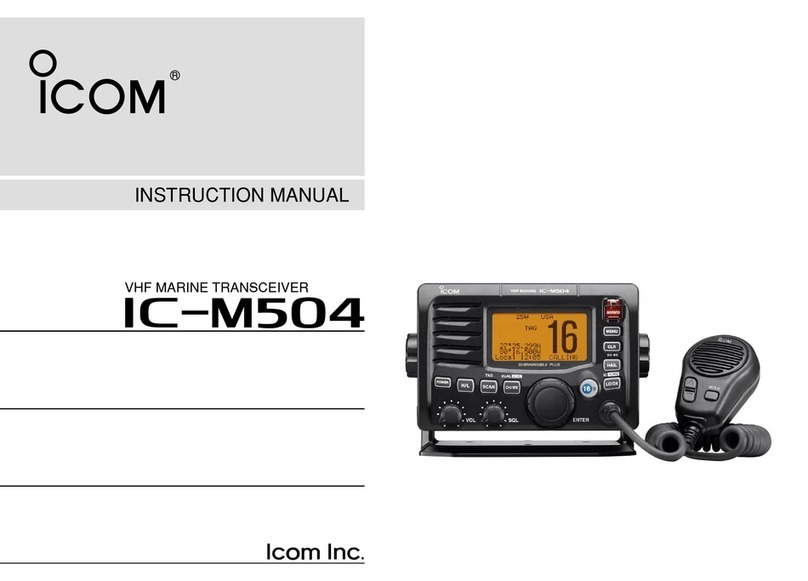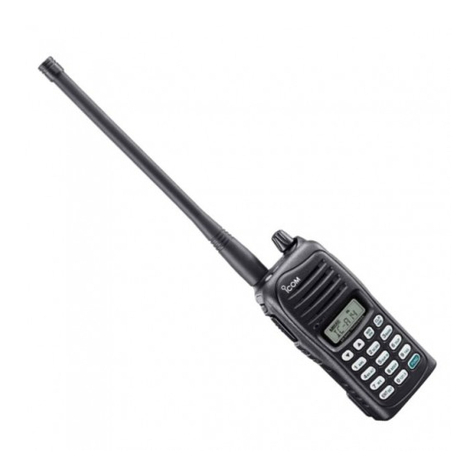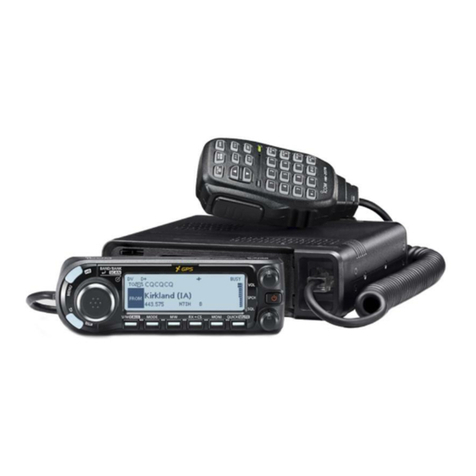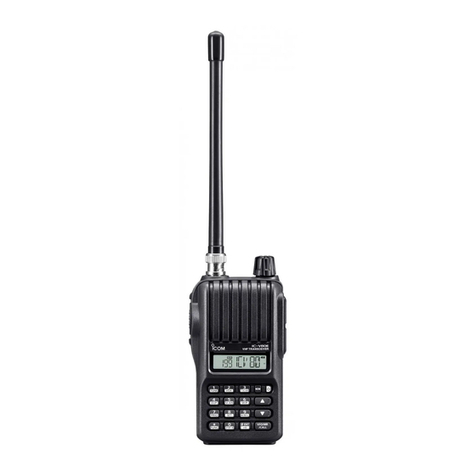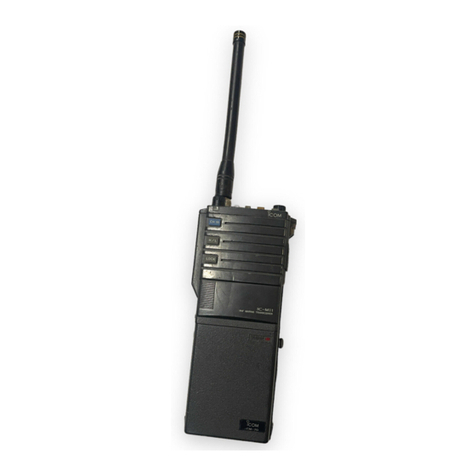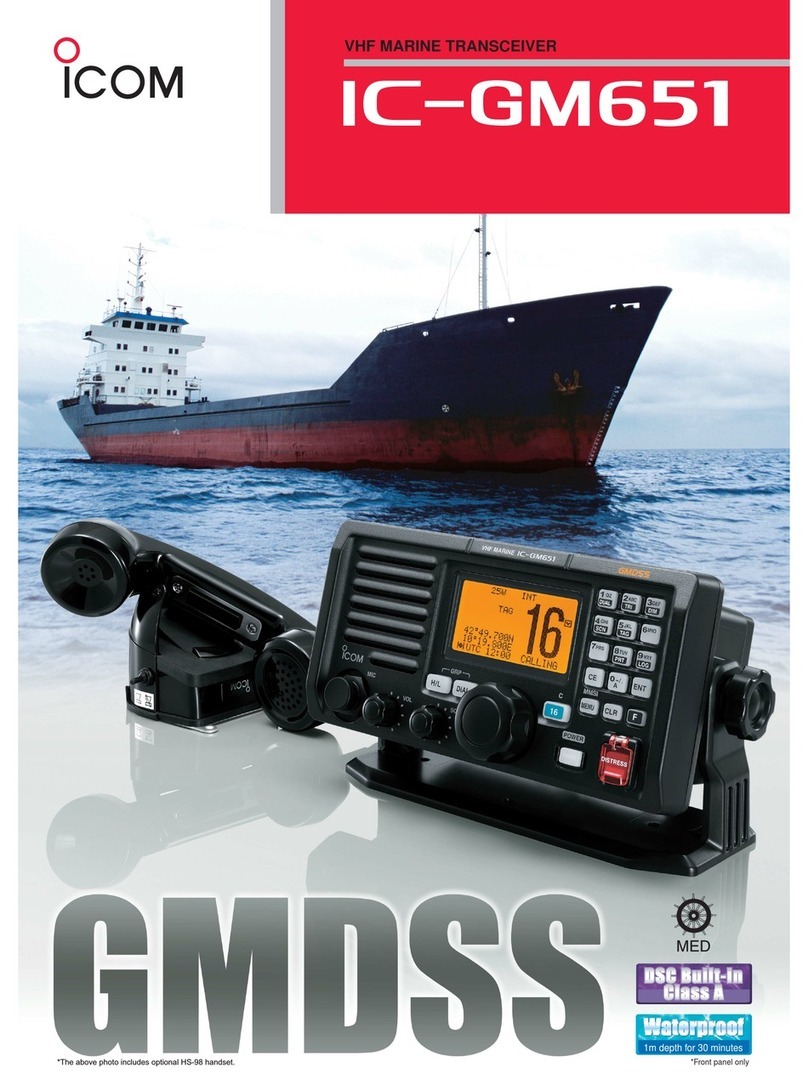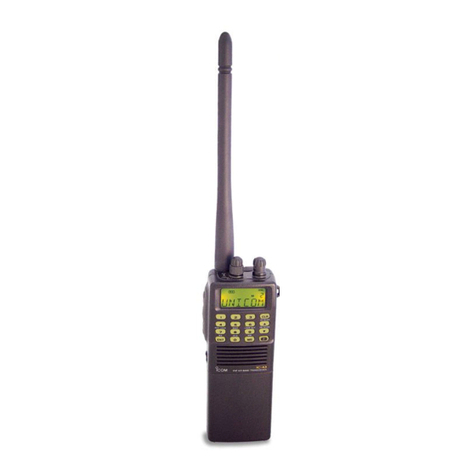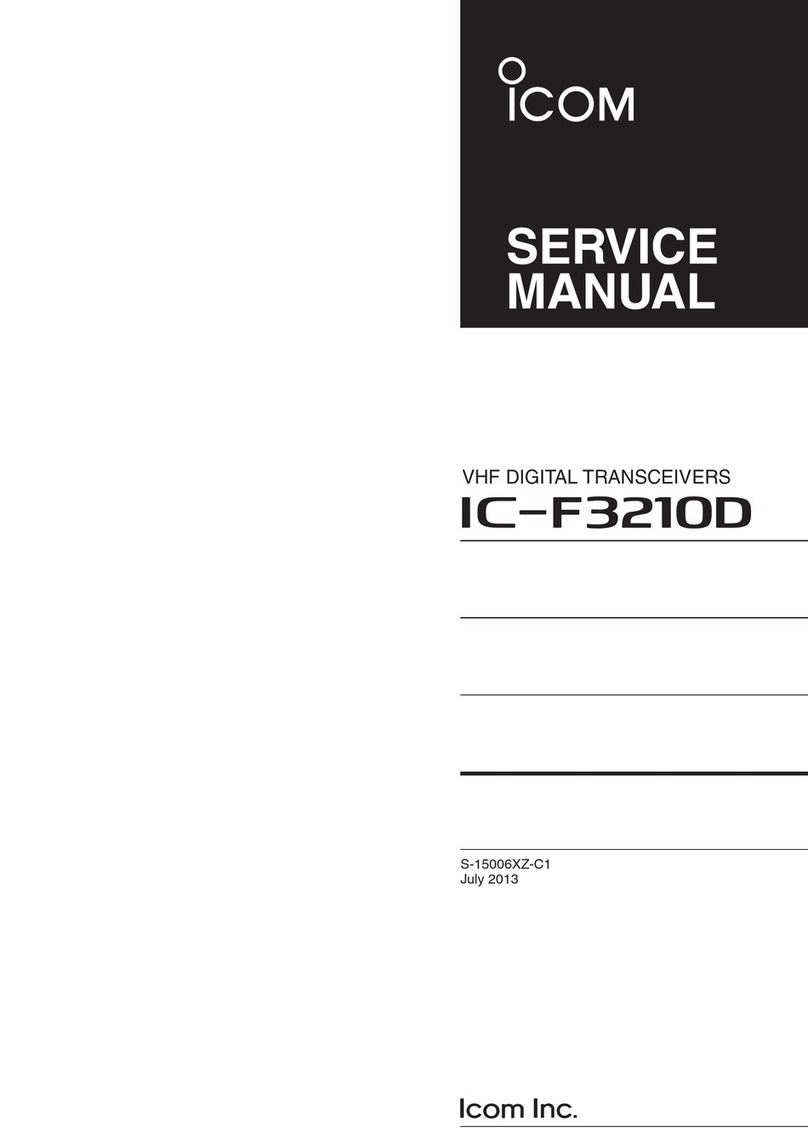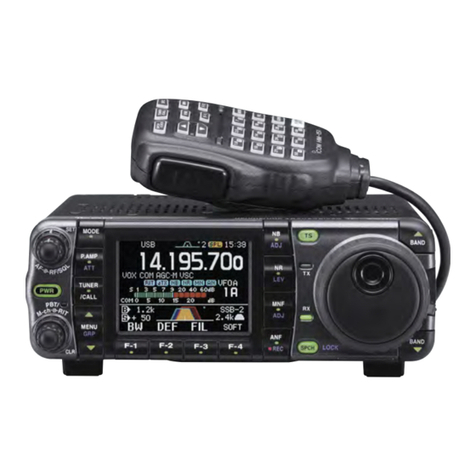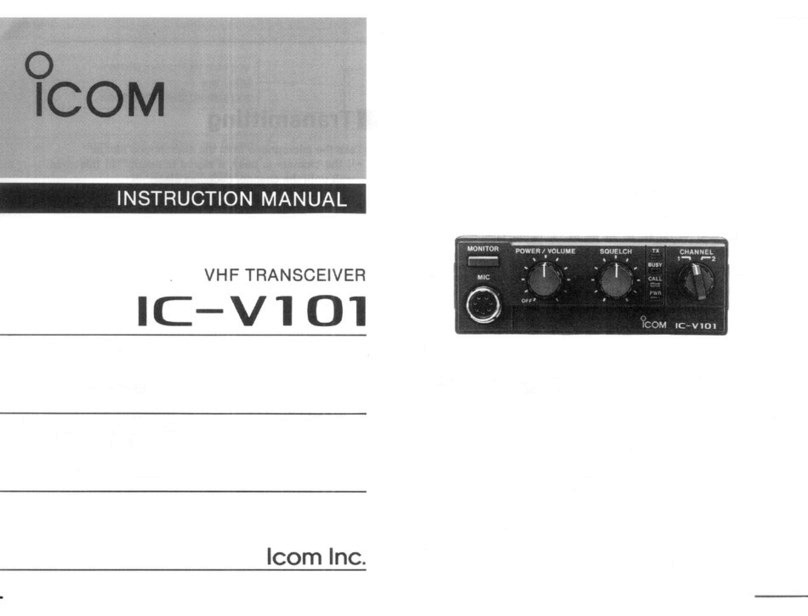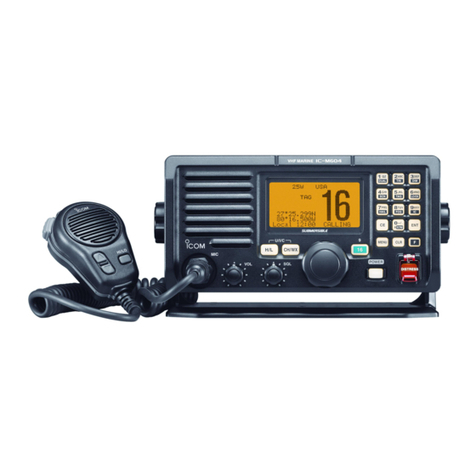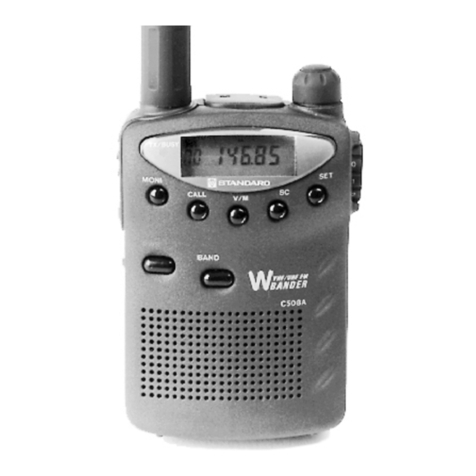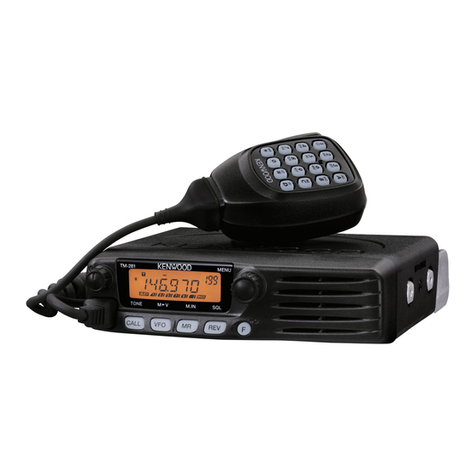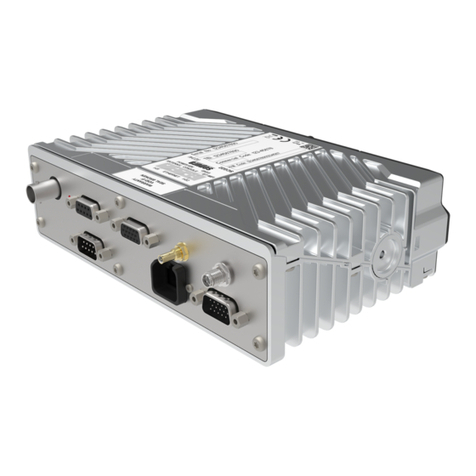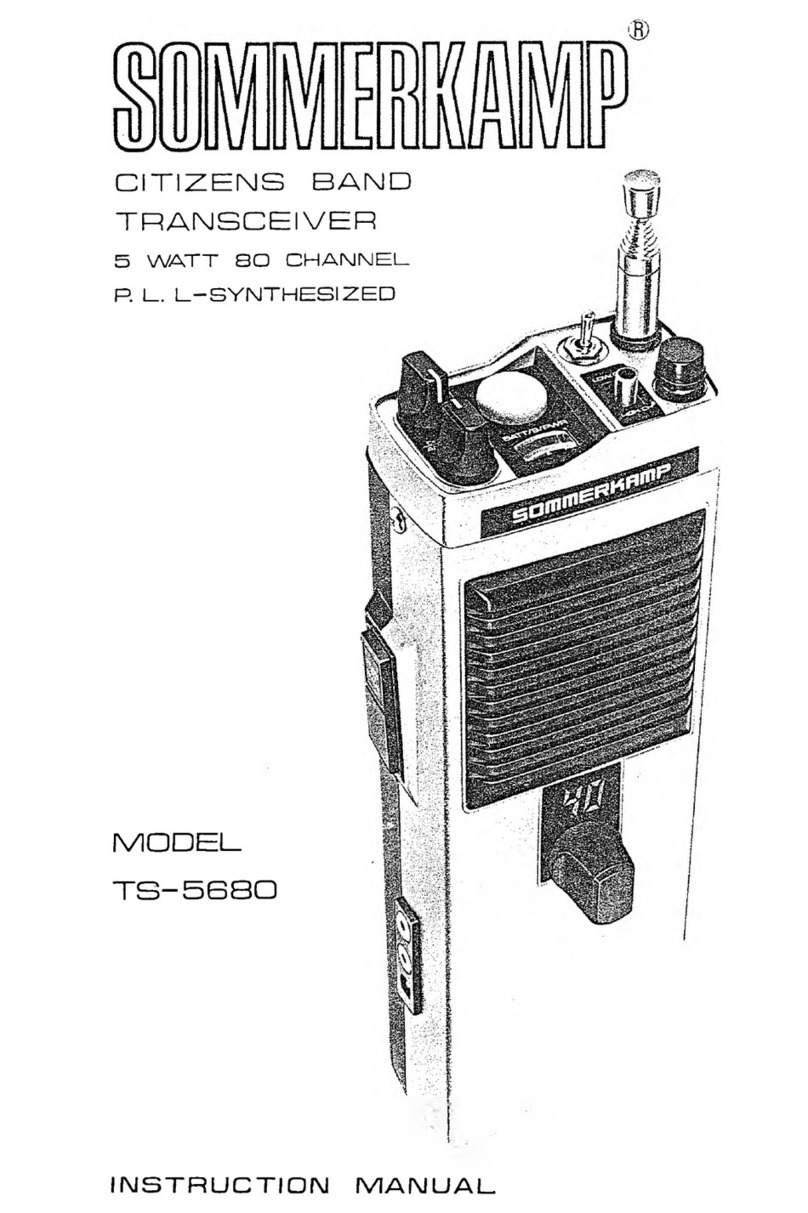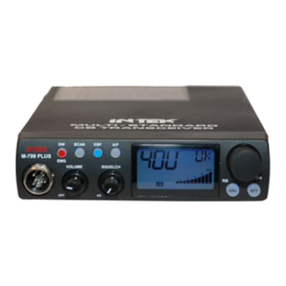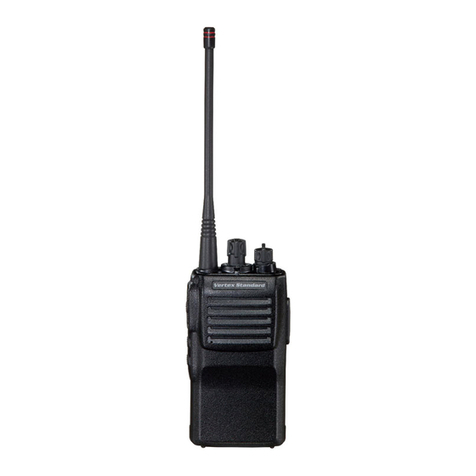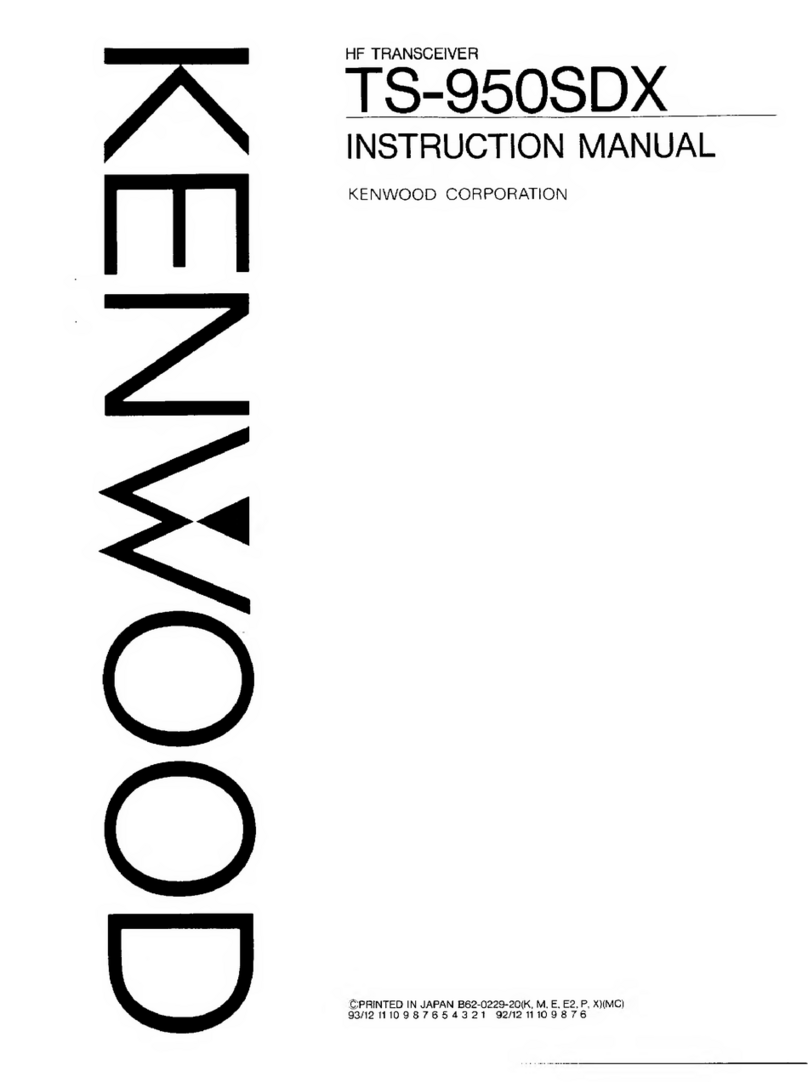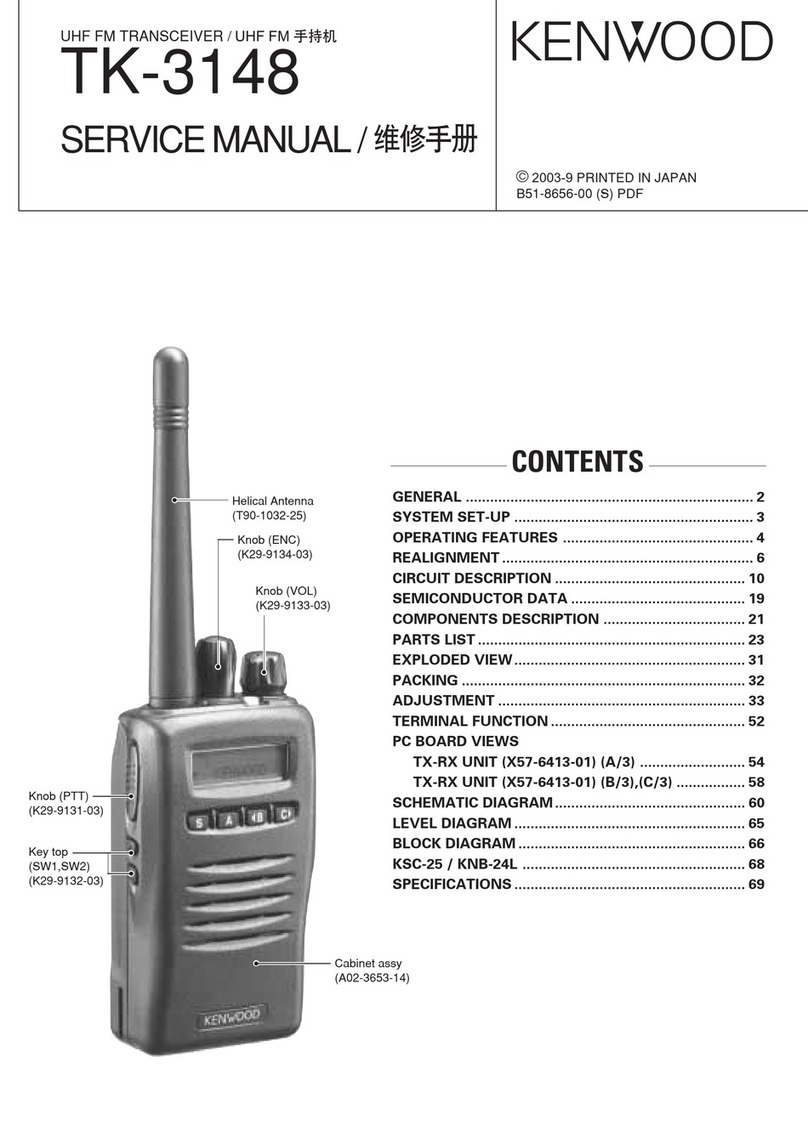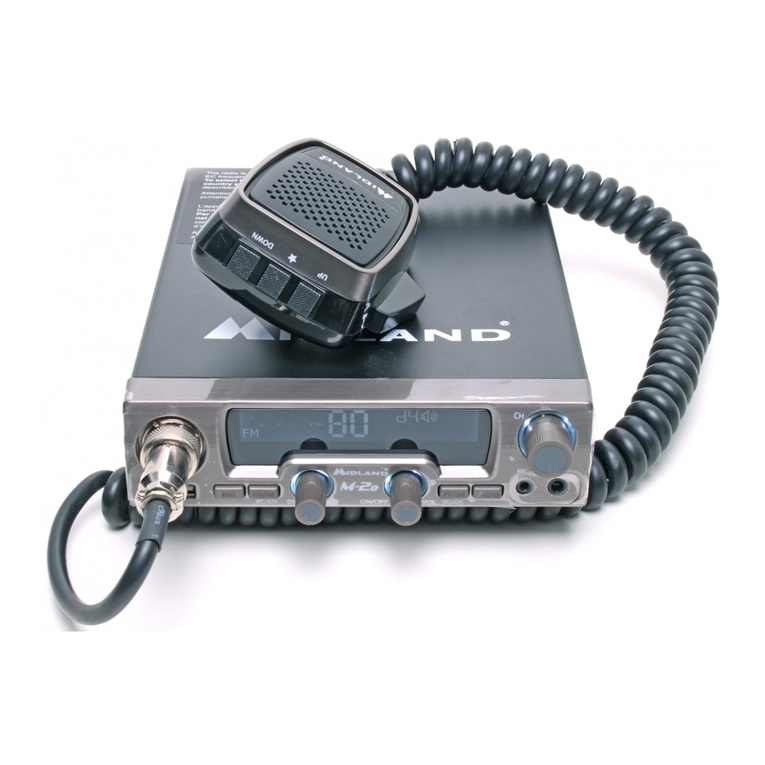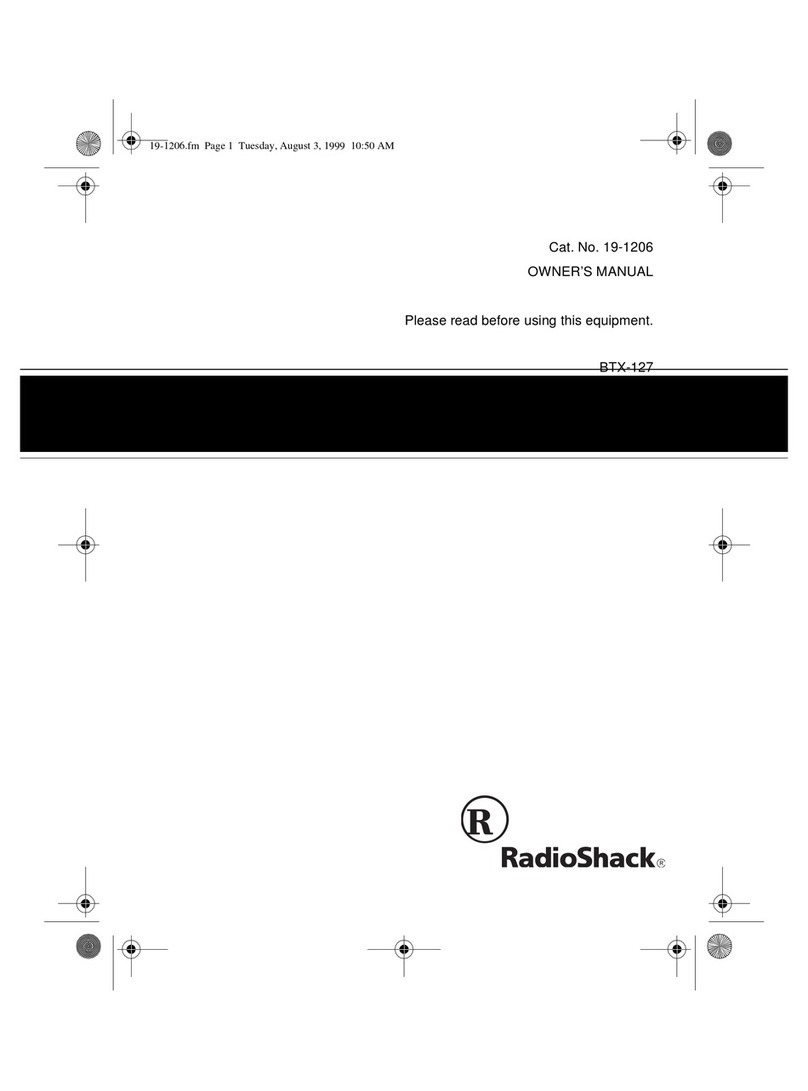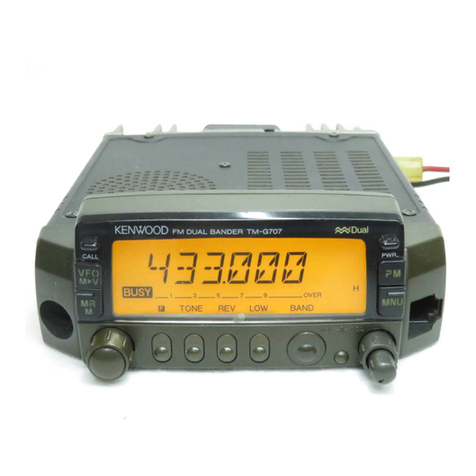Icom IC-7300 User manual

S-15218XZ-C1
March 2016
HF/50 MHz TRANSCEIVER

This service manual describes the latest technical informa-
tion for the IC-7300 HF/50 MHz transceiver,at the time of pub-
lication.
NEVER connect the transceiver to a DC power supply that
uses more than the specified voltage. This will ruin the trans-
ceiver.
DO NOT expose the transceiver to rain, snow or liquids.
DO NOT reverse the polarities of the power supply when di-
rectly applying power to the transceiver/circuit.
DO NOT apply an RF signal of more than 20 dBm (100 mW) to
the antenna connector. This could damage the transceiver’s
front-end.
To upgrade quality, any electrical or mechanical parts
and internal circuits are subject to change without notice
or obligation.
Be sure to include the following four points when ordering
replacement parts:
1. 10-digit Icom part number
2. Component name
3. Equipment model name and unit name
4. Quantity required
<ORDER EXAMPLE>
1180004830 XC6222A331MR IC-7300 MAIN UNIT 5 pieces
8110010940 3765 U-COVER IC-7300 CHASSIS 1 piece
Addresses are provided on the inside back cover for your
convenience.
ORDERING PARTS
1. Make sure that the problem is internal before disassem-
bling the transceiver.
2. DO NOT open the transceiver until the transceiver is dis-
connected from its power source.
3. DO NOT force any of the variable components. Turn them
slowly and smoothly.
4. DO NOT short any circuits or electronic parts. An insulated
tuning tool MUST be used for all adjustments.
5. DO NOT keep power ON for a long time when the trans-
ceiver is defective.
6. NEVER directly transmit power into any test equipment
such as Standard Signal Generator or a Sweep Generator,
otherwise the RF power may damage them.
7. ALWAYS connect a 50 dB to 60 dB attenuator between the
transceiver and such test equipment.
8. READ the instructions of the test equipment thoroughly
before connecting it to the transceiver.
REPAIR NOTES
INTRODUCTION SERVICE CAUTION
Icom, Icom Inc. and the Icom logo are registered trademarks of Icom Incorporated (Japan) in Japan, the United States, the
United Kingdom, Germany, France, Spain, Russia, Australia, New Zealand, and/or other countries.
MODEL VERSION VERSION
NUMBER
OPERATABLE
BANDS
IC-7300
USA #02 HF/50 MHz
EUR #03 HF/50/70 MHz
ITR #05
ESP #06
TPE #07 HF/50 MHz
KOR #08
EXP #12

TABLE OF CONTENTS
SECTION 1 SPECIFICATIONS
SECTION 2 INSIDE VIEWS
SECTION 3 CIRCUIT DESCRIPTION
3-1 PA UNIT ............................................................................................................ 3-1
3-2 RF UNIT............................................................................................................ 3-2
3-3 MAIN UNIT........................................................................................................ 3-3
SECTION 4 ADJUSTMENT PROCEDURE
4-1 PREPARATION ................................................................................................. 4-1
4-2 RECEIVE ADJUSTMENTS............................................................................... 4-2
4-3 TX IDLING CURRENT ADJUSTMENTS .......................................................... 4-3
4-4 TX POWER ADJUSTMENTS............................................................................ 4-4
4-5 TX AMPLIFIER ADJUSTMENTS ...................................................................... 4-5
4-6 FREQUENCY ADJUSTMENTS........................................................................ 4-6
SECTION 5 PARTS LIST
SECTION 6 MECHANICAL PARTS
SECTION 7 BOARD LAYOUTS
SECTION 8 GENERAL WIRING
SECTION 9 BLOCK DIAGRAM
SECTION 10 SCHEMATIC DIAGRAM

1-1
SECTION 1 SPECIFICATIONS
MGeneral
• Frequency coverage (unit: MHz):
Receiver 0.030000~ 74.800000*1
Transmitter 1.800000~ 01.999999*2
3.500000~ 03.999999*2
5.255000~ 05.405000*2
7.000000~ 07.300000*2
10.100000~ 10.150000*2
14.000000~ 14.350000*2
18.068000~ 18.168000*2
21.000000~21.450000*2
24.890000~ 24.990000*2
28.000000~ 29.700000*2
50.000000~ 54.000000*2
70.000000~ 70.500000*2
*1Some frequency ranges are not guaranteed.
*2Depending on the transceiver version.
• Operating modes: USB/LSB (J3E), CW (A1A), RTTY (F1B), AM (A3E) and FM (F3E)
• Number of memory channels: 101 (including 2 scan edges)
• Antenna connector: SO-239 (antenna impedance: 50 Ω unbalanced)
• Power supply requirement: 13.8 V DC (±15%)
• Operating temperature range: –10°C to +60°C, +14°F to +140°F
• Frequency stability: Less than ±0.5 ppm (–10°C to +60°C, +14°F to +140°F)
• Frequency resolution: 1 Hz (minimum)
• Power consumption:
Receive Standby 0.9 A
Maximum audio 1.25 A
Transmit Maximum power 21.0 A
• Dimensions (projections not included): 240 (W)×94 (H)×238 (D) mm, 9.4 (W)×3.7 (H)×9.4 (D) in
• Weight (approximately): 4.2 kg, 9.3 Ib
MTransmitter
• Transmit output power:
HF and 50 MHz bands
SSB/CW/RTTY/FM 2~100 W
AM 1~25 W
70 MHz band*2
SSB/CW/RTTY/FM 2~50 W
AM 1~12.5 W
*2Depending on the transceiver version.
• Modulation system:
SSB P.S.N. modulation
AM Low power modulation
FM Reactance modulation
• Spurious emission:
Harmonics Less than –50 dB (1.8~28 MHz)
Less than –63 dB (50 MHz band)
Less than –60 dB (70 MHz band*2)
Out-of-band emission Less than –40 dB (1.8~28 MHz)
Less than –60 dB (50 MHz band)
Less than –60 dB (70 MHz band*2)
*2Depending on the transceiver version.
• Carrier suppression: More than 50 dB
• Unwanted sideband suppression: More than 50 dB
• Input impedance (microphone): 600 Ω

1-2
MReceiver
• Receive system: Direct sampling superheterodyne
• Intermediate frequency: 36 kHz
• Sensitivity (Filter: SOFT):
SSB/CW (at 10 dB S/N)
1.8 ~ 29.999999 MHz Less than –123 dBm (0.16 μV) (P.AMP1 ON)
50 MHz band Less than –125 dBm (0.13 μV) (P.AMP2 ON)
70 MHz band*2 Less than –123 dBm (0.16 μV) (P.AMP2 ON)
*2Depending on the transceiver version.
AM (at 10 dB S/N)
0.5 ~ 1.8 MHz Less than –85 dBm (12.6 μV) (P.AMP1 ON)
1.8 ~ 29.999999 MHz Less than –101 dBm (2.0 μV) (P.AMP1 ON)
50 MHz and 70 MHz bands Less than –107 dBm (1.0 μV) (P.AMP2 ON)
FM (at 12 dB SINAD)
28.0 ~ 29.7 MHz Less than –113 dBm (0.5 μV) (P.AMP1 ON)
50 MHz and 70 MHz bands Less than –119 dBm (0.25 μV) (P.AMP2 ON)
• Squelch sensitivity (threshold):
SSB Less than –92 dBm (5.6 μV)
FM Less than –117 dBm (0.3 μV)
(HF band: P.AMP1 ON, 50 MHz band: P.AMP2 ON)
• Selectivity (Filter: SHARP):
SSB (BW=2.4 kHz) More than 2.4 kHz/–6 dB
Less than 3.4 kHz/–40 dB
CW (BW=500 Hz) More than 500 Hz/–6 dB
Less than 700 Hz/–40 dB
RTTY (BW=500 Hz) More than 500 Hz/–6 dB
Less than 800 Hz/–40 dB
AM (BW=6 kHz) More than 6.0 kHz/–6 dB
Less than 10 kHz/–40 dB
FM (BW=15 kHz) More than 12.0 kHz/–6 dB
Less than 22 kHz/–40 dB
• Spurious and image rejection: More than 70 dB (except for ADC aliasing)
• Audio output power: More than 2.5 W
(at 10% distortion into the 8 Ω load, at the 1 kHz reference)
• Output impedance (Speaker): 8 Ω
• RIT variable range: ±9.999 kHz
MAntenna tuner
• Tunable impedance range: 16.7~150 Ω (unbalanced) (less than 3:1 VSWR)
• Tuning accuracy: Less than 1.5:1 VSWR
• Tuning time (approximately): 2~3 seconds (average)
15 seconds (maximum)
LAll stated specications are typical and subject to change without notice or obligation.

2-1
SECTION 2 INSIDE VIEWS
???????
(???)
• MAIN UNIT
• ??? UNIT
(BOTTOM VIEW)
???????
(???)
AF LPF
(IC1002)
32 MB FLASH MEMORY
(IC902)
64 MB FLASH MEMORY
(IC391)
CPU
(IC301)
REAL TIME CLOCK
(IC381)
8-Bit SHIFT REGISTER
(IC141)
DSP
(IC901)
D/A CONVERTER
(IC1331)
???????
(???)
3.3 V REGULATOR
(IC241)
???????
(???)
ADJUSTABLE STEP-DOWN
CONVERTER
(IC261)
ADJUSTABLE STEP-DOWN
CONVERTER
(IC251)
8 V REGULATOR
(IC271)
8 V REGULATOR
(IC276)
DC AMP
(IC151)
DATA LINE BUFFER
(IC701)
D/A CONVERTER
(IC971)
FPGA
(IC1351)
???????
(???)
3 V REGULATOR
(IC1318)
USB CODEC
(IC661)
USB HUB
(IC621)
AF AMP
(IC721)
USB HUB CLOCK (6 MHz)
(X621)
???????
(???)
DSP CLOCK (12.288 MHz)
(X901)
EEPROM
(IC351)
BACKUP BATTERY
(FOR THE REAL TIME CLOCK)
(BT381)
CPU CLOCK (48 MHz)
(X301)
A/D CONVERTER
(IC1001)
CLOCK FILTER
(FI1221)
???????
(???)
???????
(???)
D/A CONVERTER
(IC991)
???????
(???)
LVDS DRIVER
(IC121)
DC AMP
(IC135)
DC AMP
(IC791)
USB BRIDGE
(IC641)
???????
(???)
ADJUSTABLE STEP-DOWN
CONVERTER
(IC201)
ELECTRIC DOUBLE-LAYER CAPACITOR
(C243)
ADJUSTABLE STEP-DOWN
CONVERTER
(IC221)
DC AMP
(IC125)
ANALOG SW
(IC691)
DC AMP
(IC972)
AF AMP
(IC992)
1 MB SRAM
(IC1401)
???????
(???)
???????
(???)
???????
(???)

2-2
???????
(???)
• RF UNIT
• ??? UNIT
(BOTTOM VIEW)
???????
(???)
5 V REGULATOR
(IC1061)
Q1097 to Q1110
Q1091 to Q1095
RF AMP
(Q101)
YGR AMP
(IC1031)
8-bit SHIFT REGISTER
(IC1303)
8-bit SHIFT REGISTER
(IC1302)
???????
(???)
PRE-AMP
(Q1411)
???????
(???)
???????
(???)
???????
(???)
ALC PIN DIODES
(D1021 and D1041)
ALC AMP
(IC1501)
8-bit SHIFT REGISTER
(IC1301)
DC AMP
(IC1502)
???????
(???)
???????
(???)
???????
(???)
???????
(???)
???????
(???)
???????
(???)
???????
(???)

2-3
???????
(???)
• PA UNIT
???????
(???)
TX POWER AMP
(Q132)
???????
(???)
RF AMP
(Q101)
DC AMP
(IC981)
8-bit SHIFT REGISTER
(IC751)
???????
(???)
DRIVE AMP
(Q121)
PRE-DRIVE AMP
(Q111)
???????
(???)
TX POWER AMP
(Q131)
9 V REGULATOR
(IC221)
???????
(???)
???????
(???)
???????
(???)
???????
(???)
???????
(???)
???????
(???)
???????
(???)
CURRENT MONITOR
(IC211)
???????
(???)
???????
(???)
???????
(???)

2-4
???????
(???)
10 dB ATTENUATOR
TUNING CIRCUIT
• TUNER UNIT
???????
(???)
POWER DETECTOR
(D1201)
???????
(???)
???????
(???)
SWR DETECTOR
(D1505)
8-bit SHIFT REGISTER
(IC2821)
8-bit SHIFT REGISTER
(IC2811)
8-bit SHIFT REGISTER
(IC2831)
???????
(???)
???????
(???)
???????
(???)
???????
(???)
???????
(???)
???????
(???)
DC AMP
(IC1901)
8-bit SHIFT REGISTER
(IC2841)
???????
(???)
IMPEDANCE DETECTOR
(D1701)
???????
(???)
???????
(???)
COMPARATOR
(IC1701)
PHASE DETECTOR
(D1311 and D1312)

3-1
SECTION 3 CIRCUIT DESCRIPTION
• PA AND TUNER UNITS (Receive circuits)
• PA AND TUNER UNITS (Transmit circuits)
ATT
PRE
AMP
Q1211
Q1212/Q1213
LPF
LPF A
HPF A
PHASEI
PHASE
DET
SWR
DET
SWRL
ATT
IMPI
RF
D961,D962
PWR/SWR
DET
MUTE LPF
HPF
RL801
From the TX circuits
MUTE
BPF
BPF
BPF
BPF
BPF
BPF
BPF
BPF
LPF
BPF
BPF
BPF
BPF
TPWRLBUFF
D1505
IMP
DET
D1271
TUNE
NET
TUNER UNIT
IC1701
HF/50 MHz/70 MHz
D1311 D1312
0.03-1.59 MHz
PA UNIT
fc=76 MHz
Q811
D811/D812
1.60-74.80 MHz
IC1701
To the TX AMP
D1081~D1083
D1001
50.00-54.00 MHz
22.00-29.99 MHz
30.00-49.99 MHz
54.01-69.99 MHz
70.00-74.80 MHz
15.00-21.99 MHz
2.00-2.99 MHz
4.50-6.49 MHz
10.00-14.99 MHz
3.00-4.49 MHz
1.60-1.99 MHz
8.00-9.99 MHz
6.50-7.99 MHz
1.60-30.00 MHz
POWER
DET
D1201 IC1901
D/A
IC1331
D/A
PIN
D1251
D1231
ATT
AF
AMP
AF
AMP
A/D
AMP BUFF
LPF
AAF
AF
AMP
RF
Q746
L731,L732
C731~C735
SW
SP1
J101
J1302
1
2
3
4
5
6
7
8
9
10
11
12
13
D/A
IC902
FLASH
MEMORY
LPF
LVDS
DRIVE
IC1212
BPF
XTAL AMP
IC1221
MAIN
DSP
CPU
IC901
HSK0/HSK1/DRESD/FRWT
IC301
MAIN UNIT
RF UNIT
DSPCK/DSPR/FRM/BCLK
FPGA
IC1351
41.344 MHz
(41.344 MHz)
Q1202
Q1201
DACLK
X1201
IC1211
IC721
IC992
IC992
SCPCK/SCPR/SCPX/SCPSS
5.BAND
10.FSKK
3.HSEND
13.SQLS
4.START
7.NC
11.MOD
1.8V
2.GND
9.KEY
6.ALC
[ACC]
12.AF
8.14V
FPDX/FPSR/FPSX
[EXT-SP]
[SP]
DR_AF/DR_RSV/DX_REC/DX_FMT
IC991
D/A
AGCV
IC971
124.033 MHz
/FPCAL/BCLK/FRM/MCLK
FPX_AGC/FPX_DET/FPR_MOD
SPCS/SPCK/
SPDO/SPDI
AFO
J1
1
2
3
4
5
6
7
8
J1
DISPLAY UNIT
FRONT UNIT
GND
MIC U/D
MIC
+8V
SQL
PTT
MICE
PHONE UNIT
MIC UNIT
AF OUT
3-1 PA UNIT
The PA UNIT is composed of the transmit power amplifier,
harmonic filters, and sensing circuits for the transmit power
and SWR.
(1) RECEIVE SIGNAL PROCESSING
The received signal from the TUNER UNIT is passed through
the TX/RX SW (RL801), and applied to the RF UNIT through
the LPF whose cut-off frequency is 76 MHz, and the TX mute
switch (Q811, D811 and D812).
To prevent abnormal oscillations caused by feedback of the
transmit signal, the TX mute switch connects the transmit line
to ground while receiving.
(2) TRANSMIT SIGNAL PROCESSING
• DRIVE AMPLIFIER
The transmit signal from the RF UNIT is sequentially ampli-
fied by the RF amplifier (Q101), pre-drive amplifier (Q111)
and drive amplifier (Q121). These RF amplifiers are the high
gain source-grounded amplifiers. The idling current of drive
amplifier (Q121) is appropriately adjusted to compensate for
variation in gain.
• POWER AMPLIFIER
The transmit signal from the drive amplifier (Q121) is applied
to the push-pull power amplifier (Q131 and Q132) to be ampli-
fied up to 100 watts (for the HF/50 MHz band) or 50 watts (for
the 70 MHz band). The idling current of the power amplifier
is appropriately adjusted to compensate for variation in gain.
• LPF
The transmit signal from the power amplifier is filtered by
one of the LPFs that is selected according to the transmit
frequency. These LPFs are the Chebyshev filters with sharp
cut-off characteristics, to reduce the harmonic components in
the transmit signal.
There are 7 BPFs with different cut-off frequencies.The LPFs
are selected by the relays on both sides of each LPF, accord-
ing the transmit frequency.
•
FORWARD AND REFLECT WAVES DETECTION CIRCUIT
The transmit signal is passed through the SWR detection cir-
cuit, which is composed of the CM coupler and rectifier diodes
(D961 and D962). The forward and reflect waves are detected,
resulting in the forward wave and reflect wave sensing volt-
ages.The sensing voltages are amplified by the buffer (IC981),
and then applied to the CPU in the MAIN UNIT for monitoring.
The amplified transmit signal is applied to the antenna,
through the TUNER UNIT.
PRE
AMP
Q1411
LPF
YGR
AMP
IC1031
RF
LPF
LPF
DRIVE
AMP
LPF
PWR
AMP
Q131
Q132
LPF
DRIVE
PRE
LPF
LPF
LPF
RF
AMP
D961,D962
PWR/SWR
DET
PIN
D1021
ATT
PIN
D1041
ATT HPF
ATT
ALC ALC
RL801
To the RX circuit
BPF
BPF
BPF
BPF
BPF
BPF
BPF
BPF
LPF
BPF
BPF
BPF
BPF
0.03-1.59 MHz
14.35-21.45 MHz
0.03-2.0 MHz
2.0-4.0 MHz
PA UNIT
21.45-33.0 MHz
33.0-76 MHz
Q111
7.3-14.35 MHz
Q121
4.0-7.3 MHz
Q101
1.60-74.80 MHz
D1051
D1052
22.00-29.99 MHz
50.00-54.00 MHz(TX)
30.00-49.99 MHz
54.01-69.99 MHz
70.00-72.00 MHz(TX)
15.00-21.99 MHz
2.00-2.99 MHz
4.50-6.49 MHz
10.00-14.99 MHz
3.00-4.49 MHz
8.00-9.99 MHz
6.50-7.99 MHz
1.60-30.00 MHz
AMOD A/D
MIC
AMP
LPF
MICI A/D
IC1001
RF UNIT
IC1003 IC1002
IC1002
D/A
IC1331
L1281,L1282
C1281,C1283,C1285
PIN
D1251 D1232
ATT
A/D
AMP BUFF
RF
J1302
1
2
3
4
5
6
7
8
9
10
11
12
13
LPF
LVDS
DRIVE
IC1212
BPF
XTAL AMP
IC1221
MAIN UNIT
FPGA
IC1351
41.344 MHz
(41.344 MHz)
Q1202
Q1201
DACLK
X1201
IC1211
5.BAND
10.FSKK
3.HSEND
13.SQLS
4.START
7.NC
11.MOD
1.8V
2.GND
9.KEY
6.ALC
[ACC]
12.AF
8.14V
124.032 MHz
/FPCAL/BCLK/FRM/MCLK
FPX_AGC/FPX_DET/FPR_MOD
J1
1
2
3
4
5
6
7
8
DISPLAY UNIT
GND
MIC U/D
MIC
+8V
SQL
PTT
MICE
MIC UNIT
AF OUT
PHASEI
PHASE
DET
SWR
DET
SWRL
ATT
IMPI
SW11 SW11
TPWRL
BUFF
D1505
IMP
DET
D1271
TUNE
NET
TUNER UNIT
IC1701
HF/
50 MHz/
70 MHz
D1311 D1312
IC1701
POWER
DET
D1201 IC1901
IF-DSP
IC901
TX signal
RX signal

3-2
• RF UNIT (Receive circuits)
ATT
PRE
AMP
Q1211
Q1212/Q1213
LPF
LPF A
HPF A
RF
HPF
MUTE
BPF
BPF
BPF
BPF
BPF
BPF
BPF
BPF
LPF
BPF
BPF
BPF
BPF
0.03-1.59 MHz
1.60-74.80 MHz
To the TX AMP
D1081~D1083
D1001
50.00-54.00 MHz
22.00-29.99 MHz
30.00-49.99 MHz
54.01-69.99 MHz
70.00-74.80 MHz
15.00-21.99 MHz
2.00-2.99 MHz
4.50-6.49 MHz
10.00-14.99 MHz
3.00-4.49 MHz
1.60-1.99 MHz
8.00-9.99 MHz
6.50-7.99 MHz
1.60-30.00 MHz
RF UNIT
3-2 RF UNIT
The RF UNIT is composed of the receive and transmit RF circuits.
The received signal from the PA UNIT is passed to the MAIN
UNIT through the attenuator, filter, and preamp.
The transmit signal from the MAIN UNIT is passed to the PA
UNIT through the filter, ALC circuit, and YGR AMP.
(1) RECEIVE SIGNAL PROCESSING
The received signal from the PA UNIT is passed through
the RX mute switch (D1001), passes through or bypasses
the attenuator (D1081 ~ D1083) according to the Attenuator
function setting, and is then applied to the filter circuit. The
attenuator (D1081 ~ D1083) is controlled to change the at-
tenuation level to between 0 dB (bypass) and 20 dB.
The filter circuit is composed of 15 filters. The received signal
is passed through the filter that is selected according to the
receive frequency.
The received signals of 1.6 MHz and below are passed
through only "LPF (A)." The received signals of 1.6 MHz and
above are passed through "HPF (A)," which is designed to
prevent interference by strong MF band broadcast stations.
This HPF is designed to obtain more than 20 dB of isolation
for 1.6 MHz and lower frequencies. The received signals of
1.6 MHz and above are also passed through one of the BPFs,
according to the selected operating band.
The filtered signal is then applied to the preamp circuit. The
received signal may be amplified by P.AMP1 (normal gain) or
P.AMP2 (higher gain), or bypass both, according to the Pre-
amp function setting. The received signal from the preamp
circuit is then applied to the MAIN UNIT.
TX signal
RX signal

3-3
3-2 RF UNIT (continued)
(2) TRANSMIT SIGNAL PROCESSING
The transmit signal from the MAIN UNIT is passed through
one of the BPFs in the filter circuit. The filtered signal level
is adjusted by the gain controller (D1051 and D1052), which
compensates the level difference in the band. The transmit
signal is then amplified by the YGR AMP (IC1031) to obtain
the input level needed in the transmit amplifier circuit.
PRE
AMP
Q1411
LPF
YGR
AMP
IC1031
RF
LPF
LPF
DRIVE
AMP
LPF
PWR
AMP
Q131
Q132
LPF
DRIVE
PRE
LPF
LPF
LPF
RF
AMP
D961,D962
PWR/SWR
DET
PIN
D1021
ATT
PIN
D1041
ATT HPF
ATT
ALC ALC
RL801
To the RX circuit
BPF
BPF
BPF
BPF
BPF
BPF
BPF
BPF
LPF
BPF
BPF
BPF
BPF
0.03-1.59 MHz
14.35-21.45 MHz
0.03-2.0 MHz
2.0-4.0 MHz
PA UNIT
21.45-33.0 MHz
33.0-76 MHz
Q111
7.3-14.35 MHz
Q121
4.0-7.3 MHz
Q101
1.60-74.80 MHz
D1051
D1052
22.00-29.99 MHz
50.00-54.00 MHz(TX)
30.00-49.99 MHz
54.01-69.99 MHz
70.00-72.00 MHz(TX)
15.00-21.99 MHz
2.00-2.99 MHz
4.50-6.49 MHz
10.00-14.99 MHz
3.00-4.49 MHz
8.00-9.99 MHz
6.50-7.99 MHz
1.60-30.00 MHz
AMOD A/D
MIC
AMP
LPF
MICI A/D
IC1001
RF UNIT
IC1003 IC1002
IC1002
D/A
IC1331
L1281,L1282
C1281,C1283,C1285
PIN
D1251 D1232
ATT
A/D
AMP BUFF
RF
J1302
1
2
3
4
5
6
7
8
9
10
11
12
13
LPF
LVDS
DRIVE
IC1212
BPF
XTAL AMP
IC1221
MAIN UNIT
FPGA
IC1351
41.344 MHz
(41.344 MHz)
Q1202
Q1201
DACLK
X1201
IC1211
5.BAND
10.FSKK
3.HSEND
13.SQLS
4.START
7.NC
11.MOD
1.8V
2.GND
9.KEY
6.ALC
[ACC]
12.AF
8.14V
124.032 MHz
/FPCAL/BCLK/FRM/MCLK
FPX_AGC/FPX_DET/FPR_MOD
J1
1
2
3
4
5
6
7
8
DISPLAY UNIT
GND
MIC U/D
MIC
+8V
SQL
PTT
MICE
MIC UNIT
AF OUT
PHASEI
PHASE
DET
SWR
DET
SWRL
ATT
IMPI
SW11 SW11
TPWRL
BUFF
D1505
IMP
DET
D1271
TUNE
NET
TUNER UNIT
IC1701
HF/
50 MHz/
70 MHz
D1311 D1312
IC1701
POWER
DET
D1201 IC1901
IF-DSP
IC901
• RF UNIT (Transmit circuits)
The signal level is also adjusted by the ALC circuit (D1201
and D1041), which is located at the input and output of YGR
AMP (IC1031). The ALC circuit automatically adjusts the
transmit signal level according to the transmit power sensing
voltage. The level-adjusted transmit signal is then applied to
the PA UNIT.
TX signal
RX signal

3-4
3-3 MAIN UNIT
The IC-7300 uses the Direct Conversion system, which di-
rectly converts the received signal into a digital signal by the
A/D converter. The digital signal is then converted into the 36
kHz IF signal by the FPGA, before being processed by the
DSP.
The transmit signal is processed and converted into the
transmit IF signal by the DSP. The transmit IF signal is con-
verted into an RF signal by the FPGA, and then converted
into an analog transmit signal. Since the IF signal is directly
processed as a digital signal in the FPGA, any analog hetero-
dyne circuits, such as IF circuits, are not needed.
(1) RECEIVE SIGNAL PROCESSING
• External attenuator and A/D conversion
The received signal from the RF UNIT is passed through the
TX/RX switching diode (D1231) and applied to the external
attenuator (PIN diode D1251). The attenuator is controlled by
the AGC voltage from the D/A converter (IC971) to adjust the
received signal level so that the signal amplitude is within the
input dynamic range of the A/D converter.
In a traditional transceiver, the received signal level (gain)
was controlled by the DSP prior to the external AGC circuit.
But, this method will not work in the Direct Sampling system
since the RF gain control cannot prevent over input to the
A/D converter. This method has been replaced by adding an
external AGC circuit, instead of using the DSP's internal AGC
circuitry.
The level-adjusted received signal is applied to the A/D con-
verter to be converted into a digital signal. The converted digi-
tal signal is applied to the FPGA (IC1351) where the received
signal is converted into the 36 kHz IF signal.
ATT
PRE
AMP
Q1211
Q1212/Q1213
LPF
LPF A
HPF A
PHASEI
PHASE
DET
SWR
DET
SWRL
ATT
IMPI
RF
D961,D962
PWR/SWR
DET
MUTE LPF
HPF
RL801
From the TX circuits
MUTE
BPF
BPF
BPF
BPF
BPF
BPF
BPF
BPF
LPF
BPF
BPF
BPF
BPF
TPWRLBUFF
D1505
IMP
DET
D1271
TUNE
NET
TUNER UNIT
IC1701
HF/50 MHz/70 MHz
D1311 D1312
0.03-1.59 MHz
PA UNIT
fc=76 MHz
Q811
D811/D812
1.60-74.80 MHz
IC1701
To the TX AMP
D1081~D1083
D1001
50.00-54.00 MHz
22.00-29.99 MHz
30.00-49.99 MHz
54.01-69.99 MHz
70.00-74.80 MHz
15.00-21.99 MHz
2.00-2.99 MHz
4.50-6.49 MHz
10.00-14.99 MHz
3.00-4.49 MHz
1.60-1.99 MHz
8.00-9.99 MHz
6.50-7.99 MHz
1.60-30.00 MHz
POWER
DET
D1201 IC1901
D/A
IC1331
D/A
PIN
D1251
D1231
ATT
AF
AMP
AF
AMP
A/D
AMP BUFF
LPF
AAF
AF
AMP
RF
Q746
L731,L732
C731~C735
SW
SP1
J101
J1302
1
2
3
4
5
6
7
8
9
10
11
12
13
D/A
IC902
FLASH
MEMORY
LPF
LVDS
DRIVE
IC1212
BPF
XTAL AMP
IC1221
MAIN
DSP
CPU
IC901
HSK0/HSK1/DRESD/FRWT
IC301
MAIN UNIT
RF UNIT
DSPCK/DSPR/FRM/BCLK
FPGA
IC1351
41.344 MHz
(41.344 MHz)
Q1202
Q1201
DACLK
X1201
IC1211
IC721
IC992
IC992
SCPCK/SCPR/SCPX/SCPSS
5.BAND
10.FSKK
3.HSEND
13.SQLS
4.START
7.NC
11.MOD
1.8V
2.GND
9.KEY
6.ALC
[ACC]
12.AF
8.14V
FPDX/FPSR/FPSX
[EXT-SP]
[SP]
DR_AF/DR_RSV/DX_REC/DX_FMT
IC991
D/A
AGCV
IC971
124.033 MHz
/FPCAL/BCLK/FRM/MCLK
FPX_AGC/FPX_DET/FPR_MOD
SPCS/SPCK/
SPDO/SPDI
AFO
J1
1
2
3
4
5
6
7
8
J1
DISPLAY UNIT
FRONT UNIT
GND
MIC U/D
MIC
+8V
SQL
PTT
MICE
PHONE UNIT
MIC UNIT
AF OUT
• MAIN UNIT (Receive circuits)
TX signal
RX signal

3-5
3-3 MAIN UNIT (continued)
• FPGA
FPGA (Field-Programmable Gate Array) is a device that can
digitally configure the virtual circuit in the chip.
The program that determines how it operates is written in the
external EEPROM, and loaded when the transceiver power is
turned ON. So the circuit can be reconfigured, even after the
device is mounted on the PCB, by reprogramming it.
Using mathematical functions, the FPGA (IC1351) performs
down conversion and filtering by controlling digital bits.
The received signal from the RF UNIT has been converted into
a digital data stream by the A/D converter. The converted data
is applied to the FPGA as a bit stream with the sampled signal
spectrum, and then processed by manipulating the digital bits.
The FPGA processes the signal mathematically to digitally ob-
tain the oscillation and mixing (Image rejection mixer), as if
the signal is processed in a hardware down conversion circuit.
The processed signal is applied to the DSP (IC901).
• Demodulator and D/A converter
The 36 kHz IF signal is digitally demodulated and processed
by the DSP (IC901), whose design is based totally on that of
the IC-7100. The internal AGC control, demodulation, noise
reduction (NB, NR and Notch filter) and squelch functions are
also the same as those of the IC-7100.
The demodulated and processed signal from the DSP (IC901)
is applied to the D/A converter (IC991) to be converted into
an analog AF signal. The AF signal is then applied to the AF
circuit.
• AF circuit
The AF signal is amplified by the AF AMP (IC992), and then
by the D-class AF power AMP (IC721) to obtain up to 2.5
watts (at 8 ohms, 1 kHz, 10% distortion) of output power. The
amplified signal is applied to the speaker through the LPF
(L731, L732 and C731 ~ C735), which attenuates unwanted
frequency components, and to the speaker SW (Q746).
When an external speaker is connected to the [EXT-SP] jack,
the audio output from the internal speaker (SP1) is discon-
nected.
A/D
D/A
D/A
ATT 90
Phase
shift
90
Phase
shift
BPF
BPF DET
BPF
AGC
DET
IF
AMP
LO (DDS)
36 kHz Image
Rejection
Mixer
36 kHz
FPGA (IC1351) DSP (IC901)
Mixer
SP
• FPGA BLOCK DIAGRAM (Receive circuits)

3-6
(2) TRANSMIT SIGNAL PROCESSING
• MIC AMP and A/D converter
The audio signal from the [MIC] connector on the front panel
is amplified by the MIC amplifier (IC1002), and then applied
to the A/D converter (IC1001) to be converted into a digital
signal. The audio signal from the [ACC] socket is applied to
the A/D converter (IC1001), through the mute SW (IC1003)
and LPF (IC1002), and is also converted into a digital sig-
nal. The converted digital signal is then applied to the DSP
(IC901) for audio processing.
• Modulation and D/A converter
The signal is digitally modulated in the DSP (IC901), result-
ing in the 36 kHz transmit IF signal, and then applied to the
FPGA (IC1351).
The audio signal from the microphone has been converted
into a digital data stream by the A/D converter. The converted
data is applied to the DSP (IC901), and digitally processed,
resulting in a modulated 36 kHz transmit IF signal.
• FPGA
The transmit IF signal is applied to the FPGA (IC1351). The
FPGA mathematically processes the signal to digitally obtain
the oscillation (TX LO) and mixing (Image rejection mixer), as
if the signal is processed in a hardware up conversion circuit.
The processed signal is applied to the D/A converter to be
converted in to an analog RF transmit signal.
• RF signal processing
The transmit signal, that is processed and up-converted in
the FPGA (IC1351), is applied to the D/A converter (IC1331)
to be converted into an analog transmit signal. The transmit
signal is passed through the LPF (L1281, L1282, C1281,
C1283 and C1285), which attenuates unwanted frequency
components in the transmit signal, and is then applied to the
RF UNIT.
• FPGA BLOCK DIAGRAM (Transmit circuits)
AMOD A/D
MIC
AMP
LPF
MICI A/D
IC1001
IC1003 IC1002
IC1002
D/A
IC1331
L1281,L1282
C1281,C1283,C1285
PIN
D1251 D1232
ATT
A/D
AMP BUFF
RF
J1302
1
2
3
4
5
6
7
8
9
10
11
12
13
LPF
LVDS
DRIVE
IC1212
BPF
XTAL AMP
IC1221
MAIN UNIT
FPGA
IC1351
41.344 MHz
(41.344 MHz)
Q1202
Q1201
DACLK
X1201
IC1211
5.BAND
10.FSKK
3.HSEND
13.SQLS
4.START
7.NC
11.MOD
1.8V
2.GND
9.KEY
6.ALC
[ACC]
12.AF
8.14V
124.032 MHz
/FPCAL/BCLK/FRM/MCLK
FPX_AGC/FPX_DET/FPR_MOD
J1
1
2
3
4
5
6
7
8
DISPLAY UNIT
GND
MIC U/D
MIC
+8V
SQL
PTT
MICE
MIC UNIT
AF OUT
IF-DSP
IC901
• MAIN UNIT (Transmit circuits)
A/D D/A
90
Phase
shift
90
Phase
shift
LPF
BPF
MOD
LPF
MIC
AMP
LO (DDS)
36 kHz
36 kHz
Transmit IF
FPGA (IC1351)
DSP (IC901)
Mixer
Transmit
RFsignal
Mixer LPF
BPF
MIC
Image
Rejection
Mixer
TX signal
RX signal

4-1
SECTION 4 ADJUSTMENT PROCEDURE
4-1 PREPARATION
MREQUIRED EQUIPMENTS
M GENERAL CONNECTION
• Front panel
• Rear panel
EQUIPMENT GRADE AND RANGE EQUIPMENT GRADE AND RANGE
Shunt plug Modified 3.5 mm (1/8 inch) monaural plug
(See the illustration below.)
Dummy Loads Impedance:
50 Ωand 100 Ω/120 W
Attenuator Attenuation:
50 dB/120 W
RF power meter
(50 Ω terminated)
Measuring range: 1–120 W
Frequency range: 0.1–60 MHz
SWR: Less than 1.2 : 1
Standard signal
generator (SSG)
Frequency range: 0.1–60 MHz
Output level:
–20 dBµ to +94 dBµ
(–127 to –13 dBm)
Frequency counter
Frequency range: 0.1–60 MHz
Frequency accuracy: ±1 ppm or better
Input level: Less than 1 mW
Audio generator
(AG)
Frequency range: 300–3000 Hz
Output level: 1–500 mV
AC Millivoltmeter Measuring range: 10 mV to 10 V
[SP]
[REMOTE][ANT]
<Rear view> <Front view>
AC MILLIVOLT METER
(10 mV to 10 V)
EXT. SPEAKER
(2 W/8 Ω)
+–
+
–
DUMMY LOAD
(50 or 100 Ω/120 W)
RF POWER METER
(120 W/50 Ω)
STANDARD SIGNAL GENERATOR
(0.1–60 MHz)
NEVER TRANSMIT while the SSG is connected.
FREQUENCY COUNTER
(0.1–60 MHz)
ATTENUATOR
(50 dB/120 W)
[DC 13.8V]
Fuses
25 A
DC power supply
(13.8 V/30 A)
⊕
−
Black
Red⊕
−
Supplied DC cable
[MIC]
Audio
generator
PTT
[MIC]
AC millivolt-
meter
MIC
PTT
MICE
GENERAL CONNECTION
(Short)
• Short plug
(For entering the adjustment mode)
3.5 mm (1/8 inch) monaural plug
(Shunt)
14.150.00
USB
TX
ADJUST MODE
FIL2
FRONTPreset TX/IDRX
TUNER/REF
Sub adjustment menu
<Main adjustment menu screen >
14.150.00
USB
TX
ADJUST MODE
== RX ==
FIL2
Gain S Meter
Rotate to adjust
Push to exit the menu
Sub adjustment menu
Adjustment item
<Sub adjustment menu screen example>
[SP]
[REMOTE][ANT]
<Rear view> <Front view>
AC MILLIVOLT METER
(10 mV to 10 V)
EXT. SPEAKER
(2 W/8 Ω)
+–
+
–
DUMMY LOAD
(50 or 100 Ω/120 W)
RF POWER METER
(120 W/50 Ω)
STANDARD SIGNAL GENERATOR
(0.1–60 MHz)
NEVER TRANSMIT while the SSG is connected.
FREQUENCY COUNTER
(0.1–60 MHz)
ATTENUATOR
(50 dB/120 W)
[DC 13.8V]
Fuses
25 A
DC power supply
(13.8 V/30 A)
⊕
−
Black
Red⊕
−
Supplied DC cable
[MIC]
Audio
generator
PTT
[MIC]
AC millivolt-
meter
MIC
PTT
MICE
GENERAL CONNECTION
(Short)
• Short plug
(For entering the adjustment mode)
3.5 mm (1/8 inch) monaural plug
(Shunt)
14.150.00
USB
TX
ADJUST MODE
FIL2
FRONTPreset TX/IDRX
TUNER/REF
Sub adjustment menu
<Main adjustment menu screen >
14.150.00
USB
TX
ADJUST MODE
== RX ==
FIL2
Gain S Meter
Rotate to adjust
Push to exit the menu
Sub adjustment menu
Adjustment item
<Sub adjustment menu screen example>

4-1 PREPARATION (continued)
4-2
1) Connect the shunt plug to [REMOTE] (See page 5-1).
2) While holding down the [MENU] and [FUNCTION] keys, turn ON the transceiver power.
3) The main adjustment menu appears.
1) Remove the shunt plug from [REMOTE].
2) Turn OFF the power.
3) Turn ON the power again.
M ENTERING THE ADJUSTMENT MODE
M QUITTING THE ADJUSTMENT MODE
[SP]
[REMOTE][ANT]
<Rear view> <Front view>
AC MILLIVOLT METER
(10 mV to 10 V)
EXT. SPEAKER
(2 W/8 Ω)
+–
+
–
DUMMY LOAD
(50 or 100 Ω/120 W)
RF POWER METER
(120 W/50 Ω)
STANDARD SIGNAL GENERATOR
(0.1–60 MHz)
NEVER TRANSMIT while the SSG is connected.
FREQUENCY COUNTER
(0.1–60 MHz)
ATTENUATOR
(50 dB/120 W)
[DC 13.8V]
Fuses
25 A
DC power supply
(13.8 V/30 A)
⊕
−
Black
Red⊕
−
Supplied DC cable
[MIC]
Audio
generator
PTT
[MIC]
AC millivolt-
meter
MIC
PTT
MICE
GENERAL CONNECTION
(Short)
• Short plug
(For entering the adjustment mode)
3.5 mm (1/8 inch) monaural plug
(Shunt)
14.150.00
USB
TX
ADJUST MODE
FIL2
FRONTPreset TX/IDRX
TUNER/REF
Sub adjustment menu
<Main adjustment menu screen >
14.150.00
USB
TX
ADJUST MODE
== RX ==
FIL2
Gain S Meter
Rotate to adjust
Push to exit the menu
Sub adjustment menu
Adjustment item
<Sub adjustment menu screen example>
[SP]
[REMOTE][ANT]
<Rear view> <Front view>
AC MILLIVOLT METER
(10 mV to 10 V)
EXT. SPEAKER
(2 W/8 Ω)
+–
+
–
DUMMY LOAD
(50 or 100 Ω/120 W)
RF POWER METER
(120 W/50 Ω)
STANDARD SIGNAL GENERATOR
(0.1–60 MHz)
NEVER TRANSMIT while the SSG is connected.
FREQUENCY COUNTER
(0.1–60 MHz)
ATTENUATOR
(50 dB/120 W)
[DC 13.8V]
Fuses
25 A
DC power supply
(13.8 V/30 A)
⊕
−
Black
Red⊕
−
Supplied DC cable
[MIC]
Audio
generator
PTT
[MIC]
AC millivolt-
meter
MIC
PTT
MICE
GENERAL CONNECTION
(Short)
• Short plug
(For entering the adjustment mode)
3.5 mm (1/8 inch) monaural plug
(Shunt)
14.150.00
USB
TX
ADJUST MODE
FIL2
FRONTPreset TX/IDRX
TUNER/REF
Sub adjustment menu
<Main adjustment menu screen >
14.150.00
USB
TX
ADJUST MODE
== RX ==
FIL2
Gain S Meter
Rotate to adjust
Push to exit the menu
Sub adjustment menu
Adjustment item
<Sub adjustment menu screen example>
ADJUSTMENT ITEM TRANSCEIVER'S CONDITION OPERATION VALUE
PREPARATION 1 – 1) Connect the SSG to the antenna connector,
and then set it as:
Frequency : 14.1515 MHz
Modulation
: None
2) Touch [GAIN] to enter to the receive adjust-
ment mode.
–
RX TOTAL GAIN 2 • Display: "Total Gain PRE OFF ref"
• Receive
• Set the SSG as;
Level : +34 dBµ (–73 dBm)
Touch [SET].
(A beep sounds, and
then another beeps
sound 2 sec. later.)
3 • Display: "Total Gain PRE OFF set"
• Receive
• Set the SSG as;
Level : OFF
Touch [SET].
(A beep sounds, and
then another beeps
sound 20 sec. later.)
4 • Display: "Total Gain PRE1 ref"
• Receive
• Set the SSG as;
Level : +34 dBµ (–73 dBm)
Touch [SET].
(A beep sounds, and
then another beeps
sound 2 sec. later.)
5 • Display: “Total Gain PRE1 set"
• Receive
• Set the SSG as;
Level : OFF
Touch [SET].
(A beep sounds, and
then another beeps
sound 20 sec. later.)
S-METER 6 • Display: "HF S9 Level"
• Receive
• Set the SSG as;
Level : +34 dBµ (–73 dBm)
Touch [SET].
(A beep sounds, and
then another beep
sounds 1 sec. later.)
7 • Display: "HF S9+60 Level"
• Receive
• Set the SSG as;
Level : +90 dBµ (–17 dBm)
• Push [EXIT] to return to the main adjustment menu.
• Touch [RX] on the main adjustment menu screen.
4-2 RECEIVE ADJUSTMENTS
NOTE: DO NOT change the SSG output level until the second beep sounds.

4-3
4-3 TX IDLING CURRENT ADJUSTMENTS
ADJUSTMENT ITEM TRANSCEIVER'S CONDITION OPERATION VALUE
PREPARATION 11) Connect the power meter (or dummy load)
to the antenna connector.
2) Touch [ID] to enter to the TX idling current
adjustment mode.
–
ADJUSTMENT 2 • Display: “VDL IDL Set”
• Receive
– Touch [SET].
(A beep sounds, and
then another beep
sounds 0.5 sec. later.)
3 • Display: “FINAL ID SET”
• Receive
4 • Display: “FINAL1 IDV”
• Transmit (automatic)
5 • Display: “FINAL2 IDV”
• Transmit (automatic)
6 • Display: “DRIVER ID SET”
• Transmit (automatic)
7 • Display: “DRIVER IDV”
• Transmit (automatic)
• Push [EXIT] to return to the TX adjustment menu.
• Touch [TX/ID] on the main adjustment menu screen.
NOTE: The transceiver automatically transmits when a TX adjustment item is selected.

• Touch [TX/ID] on the main adjustment menu screen.
4-4
ADJUSTMENT ITEM TRANSCEIVER'S CONDITION OPERATION ADJUST
POINT VALUE
TX POWER &
POWER METER SETTING
(Preparation)
1 • Display: “TX POWER SET”
• Receive
1)
Connect the AG with the millivoltmeter
to [MIC], and then set it as;
Frequency : 1.5 kHz
Level : 30 mVrms
2) Connect the power meter to the
antenna connector.
3) Touch [Power] to enter to the TX
power adjustment mode.
– –
(HF BAND) 2 • Display: "TX Total HF Gain"
• Transmit (automatic)
• Adjust the TX power by rotating
[MAIN DIAL], and then touch [SET].
[MAIN DIAL] 50 W
(A beep sounds, and
then another beeps
sound 0.5 sec. later.)
3 • Display: "POWER HF 1%"
• Transmit (automatic)
2 W
(A beep sounds, and
then another beeps
sound 0.5 sec. later.)
4 • Display: "POWER HF 10%"
• Transmit (automatic)
12.5 W
(A beep sounds, and
then another beeps
sound 0.5 sec. later.)
5 • Display: "POWER HF TUNE"
• Transmit (automatic)
6 • Display:
"POWER HF 50%"
• Transmit (automatic)
52.5 W
(A beep sounds, and
then another beeps
sound 0.5 sec. later.)
7 • Display:
"POWER HF 100%"
• Transmit (automatic)
105 W
(A beep sounds, and
then another beeps
sound 0.5 sec. later.)
AM CARRIER POWER
(HF BAND)
8 • Display:
"POWER AM Ratio HF"
• Transmit (automatic)
1) Touch [SET].
(Automatically starts to transmit.)
2) Adjust the TX power by rotating
[MAIN DIAL], and then touch [SET].
25 W
(A beep sounds, and
then another beeps
sound 0.5 sec. later.)
9 • Display: "POWER 50M SET"
• Transmit (automatic)
––Touch [SET].
TX POWER &
POWER METER SETTING
(50 MHz band)
10 • Display: "TX Total 50M Gain"
• Transmit (automatic)
• Adjust the TX power by rotating
[MAIN DIAL], and then touch [SET].
[MAIN DIAL]
50 W
(A beep sounds, and
then another beeps
sound 0.5 sec. later.)
11 • Display: "POWER 50M 1%"
• Transmit (automatic)
–2 W
(A beep sounds, and
then another beeps
sound 0.5 sec. later.)
12 • Display: "POWER 50M 10%"
• Transmit (automatic)
12.5 W
(A beep sounds, and
then another beeps
sound 0.5 sec. later.)
13 • Display: "POWER 50M TUNE"
• Transmit (automatic)
14 • Display: "POWER 50M 50%"
• Transmit (automatic)
52.5 W
(A beep sounds, and
then another beeps
sound 0.5 sec. later.)
15 • Display: "POWER 50M 100%"
• Transmit (automatic)
105 W
(A beep sounds, and
then another beeps
sound 0.5 sec. later.)
AM CARRIER POWER RATIO
(50 MHz band)
16 • Display: "POWER AM Ratio 50M"
• Transmit (automatic)
1) Touch [SET].
(Automatically starts to transmit.)
2) Adjust the TX power by rotating
[MAIN DIAL], and then touch [SET].
25 W
(A beep sounds, and
then another beeps
sound 0.5 sec. later.)
17 • Display: "POWER 70M SET"
• Receive
– – Touch [SET].
4-4 TX POWER ADJUSTMENTS
(Continued on the next page.)
NOTE: The transceiver automatically transmits when a TX adjustment item is selected.

4-5
ADJUSTMENT ITEM TRANSCEIVER'S CONDITION OPERATION ADJUST
POINT VALUE
TX POWER &
POWER METER SETTING
(70 MHz band)
18 • Display: "TX Total 70M Gain"
• Transmit (automatic)
–
[MAIN DIAL]
25 W
(A beep sounds, and
then another beeps
sound 0.5 sec. later.)
19 • Display: "POWER 70M 1%"
• Transmit (automatic)
2 W
(A beep sounds, and
then another beeps
sound 0.5 sec. later.)
20 • Display: "POWER 70M 10%"
• Transmit (automatic)
7.5 W
(A beep sounds, and
then another beeps
sound 0.5 sec. later.)
21 • Display: "POWER 70M TUNE"
• Transmit (automatic)
10 W
(A beep sounds, and
then another beeps
sound 0.5 sec. later.)
22 • Display: "POWER 70M 50%"
• Transmit (automatic)
27.5 W
(A beep sounds, and
then another beeps
sound 0.5 sec. later.)
23 • Display: "POWER 70M 100%"
• Transmit (automatic)
52.5 W
(A beep sounds, and
then another beeps
sound 0.5 sec. later.)
AM CARRIER POWER
(70 MHz band)
Only for [#03, 05 and 06]
24 • Display: "POWER AM Ratio 70M"
• Transmit (automatic)
1) Touch [SET].
(Automatically starts to transmit.)
2) Adjust the TX power by rotating
[MAIN DIAL], and then touch [SET].
12.5 W
(A beep sounds, and
then another beeps
sound 0.5 sec. later.)
• Push [EXIT] to return to the main adjustment menu.
ADJUSTMENT ITEM TRANSCEIVER'S CONDITION OPERATION VALUE
PREPARATION 1 • Display: “TX POWER SET”
• Receive
1)
Connect the AG with the millivoltmeter
to [MIC], and then set it as;
Frequency : 1.5 kHz
Level : 30 mVrms
2) Connect the power meter to the
antenna connector.
3) Touch [ALC] on the TX adjustment
menu, to enter to the TX amplifier
adjustment mode.
–
ALC METER 2 • Display: "ALC HF"
• Transmit (automatic)
– Touch [SET].
(A beep sounds, and then another
beeps sound 3 sec. later.)
3 • Display: "ALC 50M"
• Transmit (automatic)
Only for [#03, 05 and 06] 4 • Display: "ALC 70M"
• Transmit (automatic)
DRIVE AMP GAIN 5 • Display: "DRIVE HF"
• Transmit (automatic)
Touch [SET].
(A beep sounds, and then another
beeps sound 10 sec. later.)
6 • Display: "DRIVE 50M"
• Transmit (automatic)
Touch [SET].
(A beep sounds, and then another
beeps sound 3 sec. later.)
7 • Display: "DRIVE 70M"
• Transmit (automatic)
Touch [SET].
(A beep sounds, and then another
beeps sound 1 sec. later.)
SWR METER 8 • Display: "SWR2 (HF)"
• Transmit (automatic)
• Connect the 50 Ωdummy load to the
antenna connector.
Touch [SET].
(A beep sounds, and then another
beeps sound 3 sec. later.)
9 • Display: "SWR2 (50M)"
• Transmit (automatic)
Only for [#03, 05 and 06] 10 • Display: "SWR2 (70M)"
• Transmit (automatic)
Id APC 11 • Display: "ID-APC"
• Transmit (automatic)
– Touch [SET].
(A beep sounds, and then another
beeps sound 2 sec. later.)
• Push [EXIT] to return to the main adjustment menu.
• Touch [TX/ID] on the main adjustment menu screen.
4-5 TX AMPLIFIER ADJUSTMENTS
4-4 TX POWER ADJUSTMENTS (continued)
NOTE: The transceiver automatically transmits when a TX adjustment item is selected.
Other manuals for IC-7300
12
Table of contents
Other Icom Transceiver manuals
